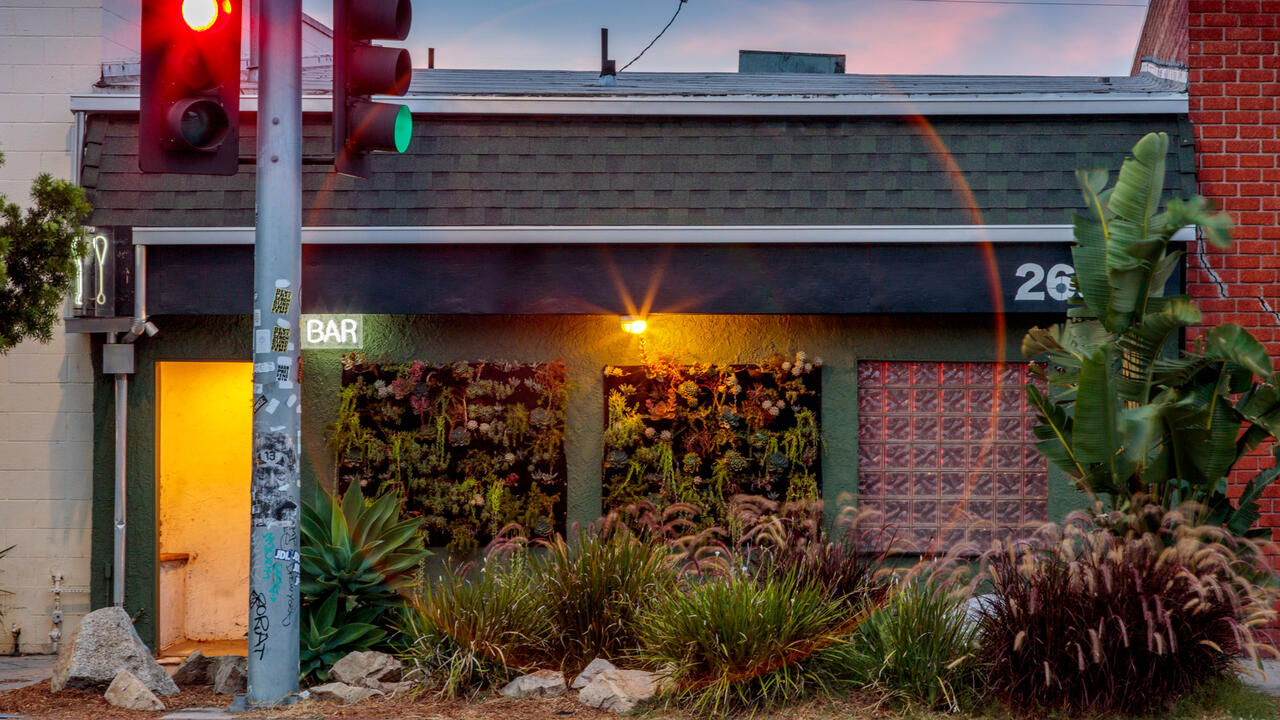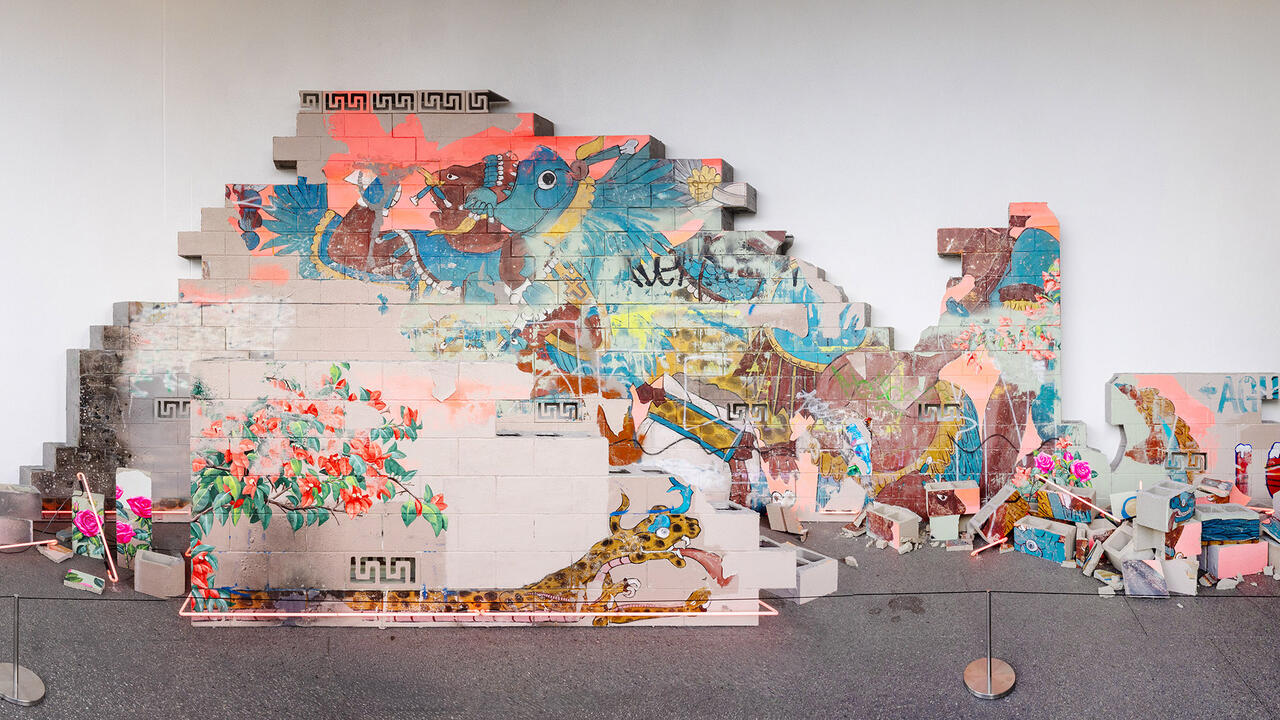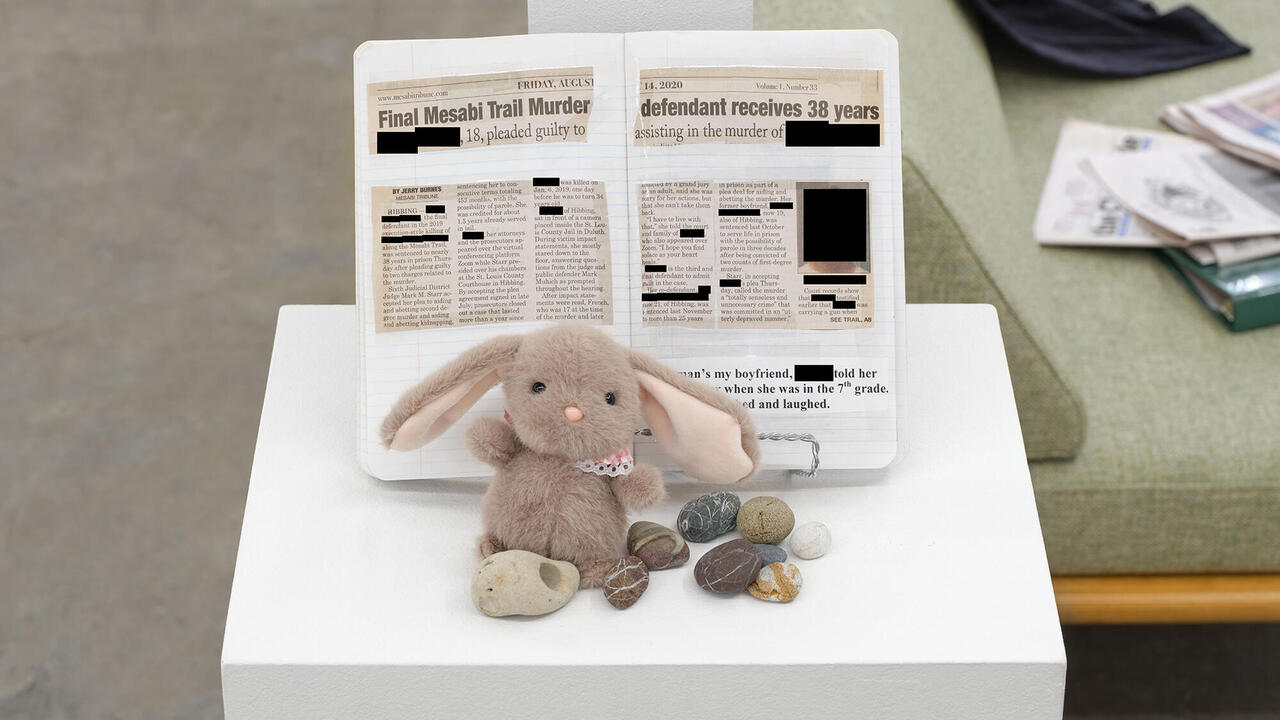Fiona Connor
1301PE, Los Angeles, USA
1301PE, Los Angeles, USA

Probably the least interesting thing to say about Fiona Connor’s simulacra of community noticeboards, remade from originals encountered by the artist in and around Los Angeles, is that they function as surrogate paintings. But it’s unavoidable, so we might as well get it out of the way. Most have frames and are about the same size as medium-sized canvases, and some even protect their contents behind glass. Though Connor’s facsimiles are, from a distance, indistinguishable from their real-life counterparts, something about their precise placement on gallery walls renders them uncanny. Noticeboards, by and large, are not privileged with the same thoughtful installation as paintings; they are squeezed into corners or nailed up, off-centre, on already crowded walls.
This casual (mis)treatment of noticeboards, however, is inadvertently what makes them rich pickings for the artist. They are social documents teeming with information. Connor has harvested every revelatory detail – from leftover staples and pushpins to inscrutable graffiti to sticky tape residue – and re-created them in her gallery analogues. They are much more than cynical wisecracks about the societal function and aesthetic status of paintings, even though they perform that role too; is it an accident that Connor calls her show ‘Community Notice Board’, rather than ‘Community Noticeboard’? Is her title actually a directive to the contemporary art community to notice these boards? They are, effectively, context-specific works and make much more piquant sense in the public realm – either in a commercial gallery, an art fair or a museum – than they would in the privacy of a collector’s home.
They are also temporally specific. Noticeboards are intended to be up-to-date but these ones are ageing, and fast. Frozen at the moment Connor turned them into art, they are micro-histories of communities in the last months of 2014 and the first of 2015. If you called those phone numbers, you’d doubtless find that the room was rented weeks ago, the lost Chihuahua retrieved, and the English classes fully subscribed. In Community Notice Board (Senior) (all works 2015) – a demographic for whom time is very much of the essence – a sign-up sheet for a trip to the Pala Casino announces that the bus leaves at 8.30am ‘SHARP’ on Tuesday 20 January 2015. Seems we’ve missed that one. We might be in time, however, for the three-night July trip to Reno, if the requisite 42 spaces haven’t already been filled.
But, nestled within that anachronism is a further anachronism; many of these noticeboards, such as Community Notice Board (La Brea), look as if they have long slipped out of currency. The almost-bare corkboard is a vanitas for a channel of communication that has, by and large, been made obsolete by the internet. The exhibition’s press release astutely points out that the terms ‘message board’ and ‘forum’ are now associated with the online world more than they are with bricks and mortar, and that on such sites (the word here is ironic) these placeless communities self-organize by interest rather than by geographical location. Connor does not cast judgment one way or the other on this development, although it is easy to detect in her work a note of anticipatory nostalgia for the soon-to-be-forgotten time when D’Juan Professional Barber was obliged to tout his trade next to ME Photography and Kelly Walker LCSW, Licensed Mental Health Professional. Isn’t that what a community is all about?
In the age of effortless and Retina-quality digital image capture, Connor’s methodology for reproducing these objects is perplexingly unclear. Since most of the notices are printed using home technology, it would have been easy for her to remove them from the boards, scan or photocopy them and then – should her conscience compel her – re-pin them in their original places. Instead, the notices are either screenprinted or UV printed on aluminium, archival-quality media that provide the most obvious clues that these objects are not what they seem. Screenprinted text is subtly unlike a photocopy, and the UV printing is softer, more speckled, than most Inkjet printing on paper or card. These anomalies return us to thoughts about the technologies of reproduction but they also remind us that Connor’s sculptures are entropy-defying monuments to 21st-century folkways, already obsolete even though they are only a few months old.























